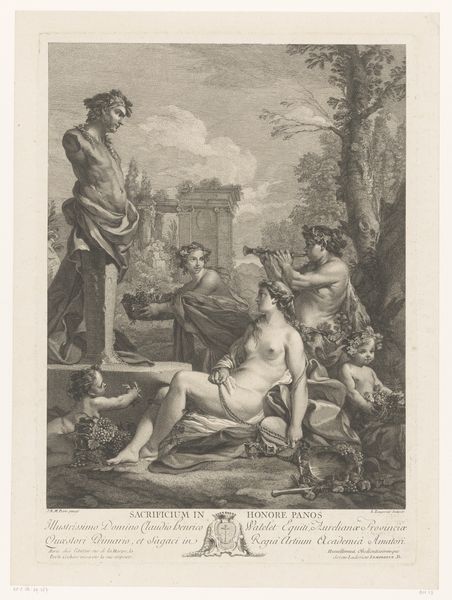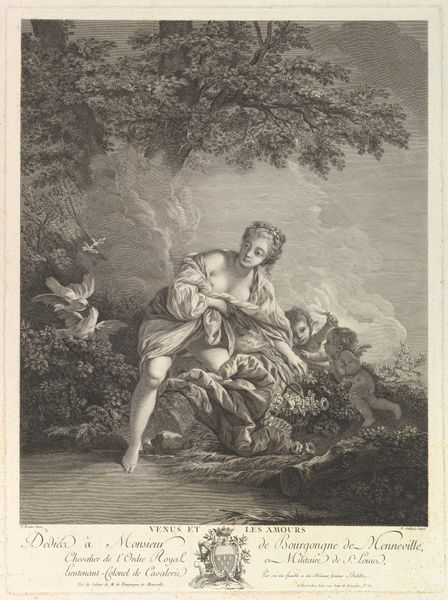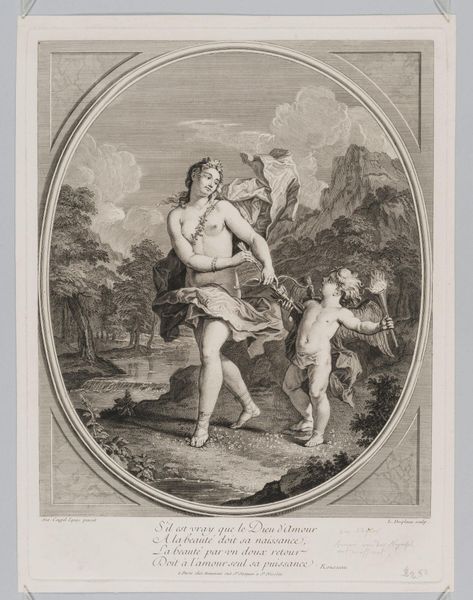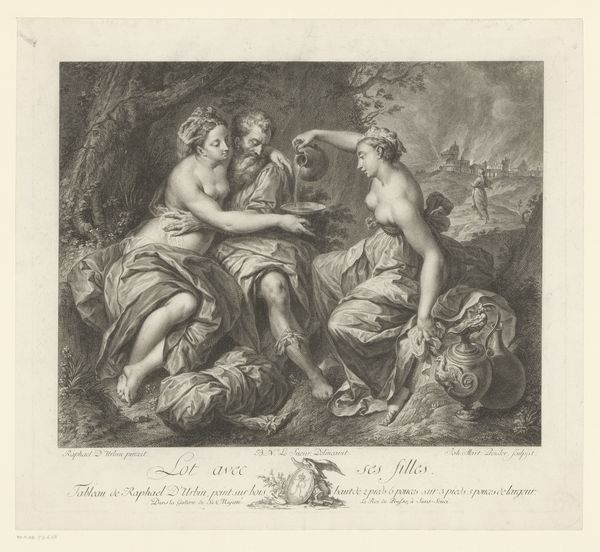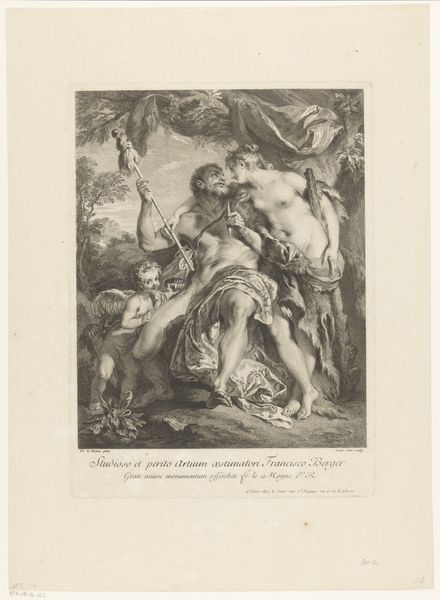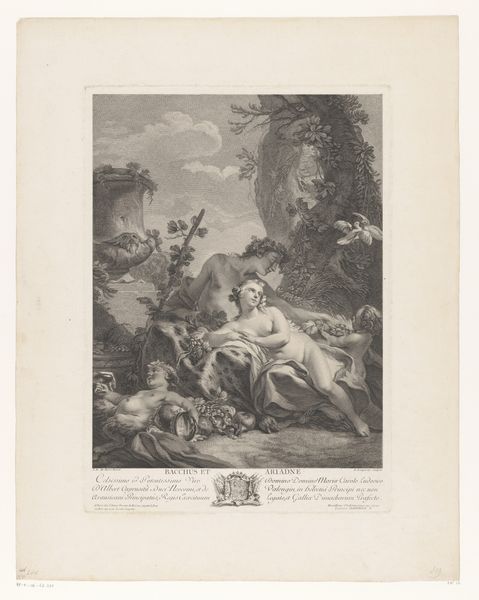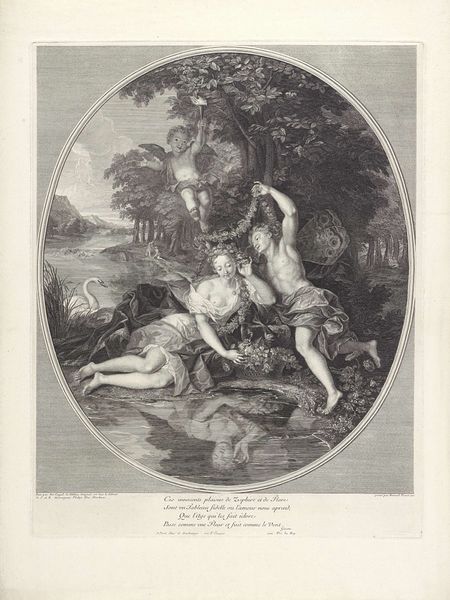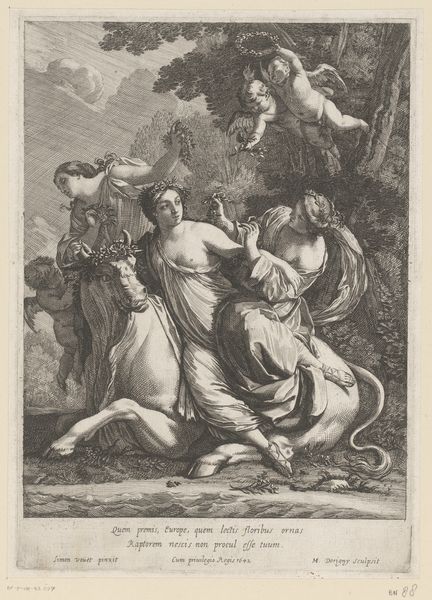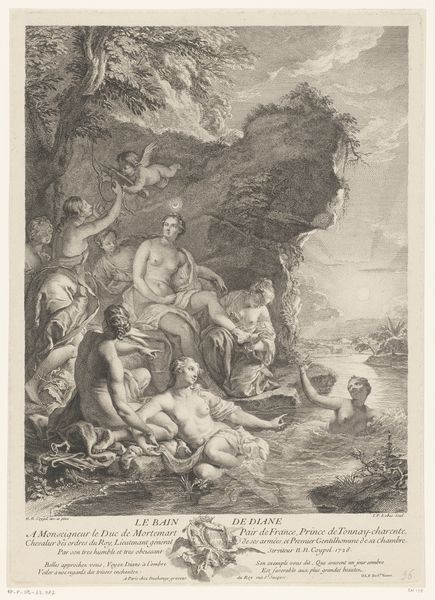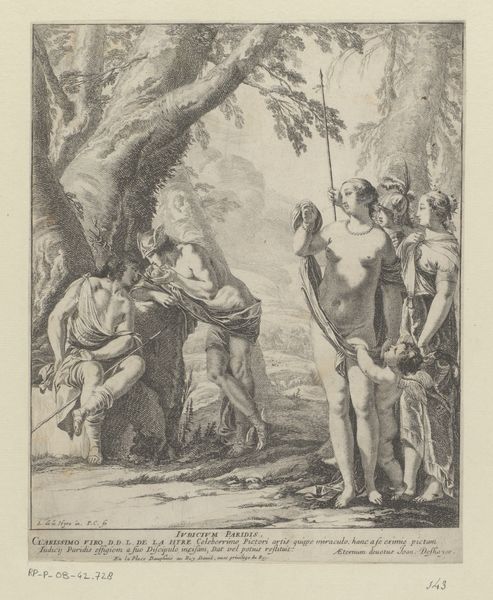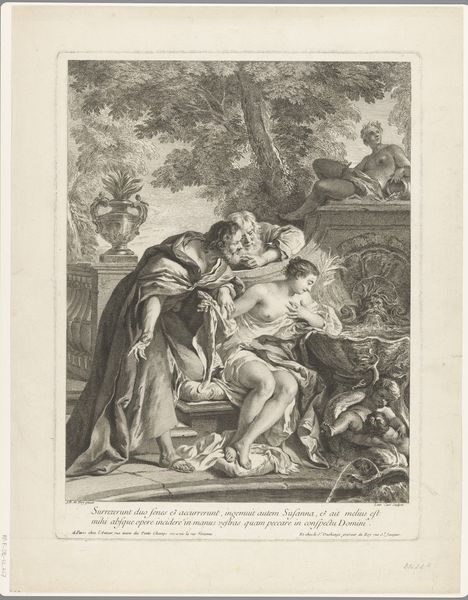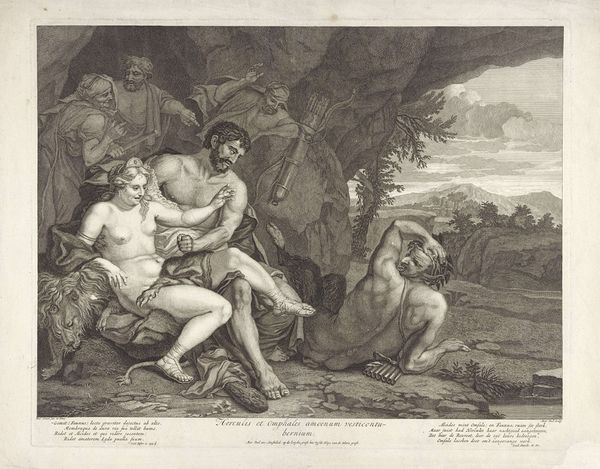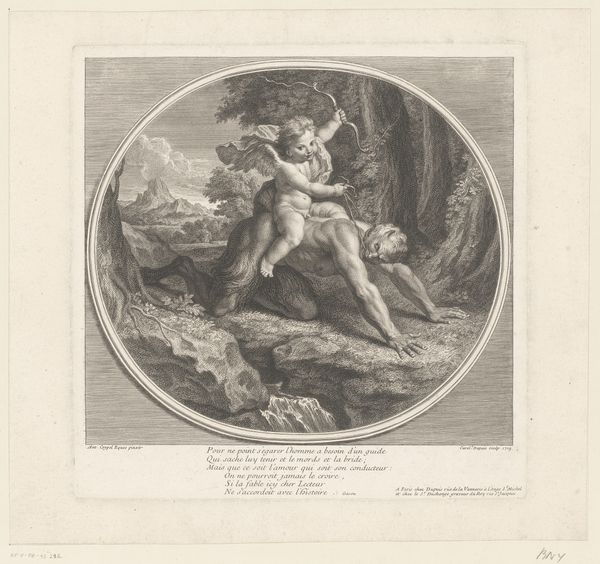
Dimensions: height 441 mm, width 321 mm
Copyright: Rijks Museum: Open Domain
Jean Jacques Flipart created this print of Venus and Aeneas in the 18th century using etching and engraving techniques. Look closely, and you’ll see that the image is composed of countless tiny lines, each one carefully bitten into the metal plate with acid or incised with a burin. The linear quality of the print gives it a distinctive texture, a visual language that translates the sensuous figures of Venus and Aeneas into a more graphic, reproducible form. This was no small undertaking, as printmaking in this era demanded a high degree of skill and labor. The engraver had to be both technically proficient and artistically sensitive, capable of translating a painter’s vision into a new medium. Prints like this were part of a burgeoning industry. They democratized access to art and culture. Suddenly, images that were once confined to the walls of aristocratic homes could be disseminated widely. In this way, printmaking had a profound impact on the circulation of knowledge and taste, helping to shape the visual culture of the Enlightenment. It’s a reminder that even seemingly straightforward images are the product of complex social and economic forces.
Comments
No comments
Be the first to comment and join the conversation on the ultimate creative platform.
